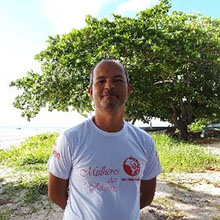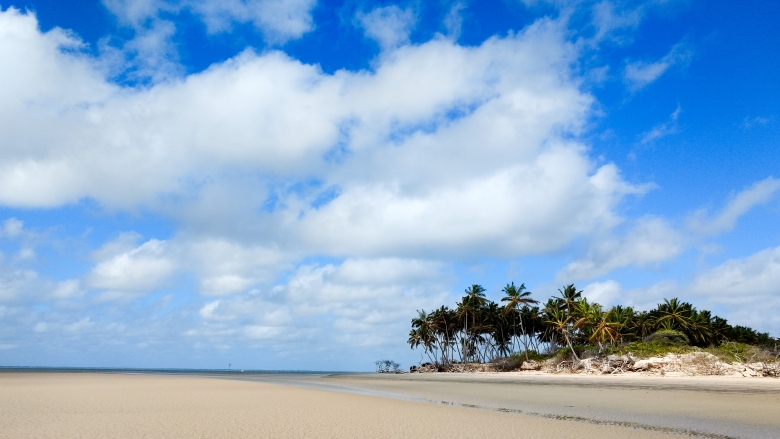Results
Between November 2014 and March 2020, the following key project outcomes were achieved:
- 96.4 million hectares of MCPAs were established, representing 26.4 % of Brazil’s vast marine exclusive economic zone.
- Management and monitoring of 1,582,890 hectares of MCPAs were strengthened.
- Two mutually supporting financial mechanisms were created to support the long-term sustainability of MCPAs; one mechanism (the Marine Fund) is fully capitalized at US$8.5 million.
Other achievements under the project include:
- Creation of the MCPA network was formalized through relevant decrees.
- The conservation status of 257 marine species was elevated as part of the review of the Red Book of Threatened Species, an effort undertaken along with the elaboration, evaluation, and monitoring of National Conservation Plans for marine threatened species. This meant that around 86 % of endangered marine species were included in the conservation plans.
- A national monitoring strategy was implemented. Several workshops and meetings regarding the program’s design and a training course for multipliers of the Monitora Program were held.
- Local management plans were prepared with a focus on self-monitoring the use of endangered fishing species.
- A scholarship program was created that aimed at hiring community members for enhanced MCPA management at the local level; currently, 80 scholarships have been awarded.
- Over one million tons of oil were cleaned up, mostly by volunteer crews.
- Subprojects to engage and consult with participants were developed: 7,325 residents, of whom 2,972 (41 %) were female, took part in the 20 subprojects financed. Twenty-two local communities and Indigenous groups, leaders, and managers undertook subprojects such as routine workplan development, education and awareness programs, and programs to improve community well-being while ensuring conservation. Subprojects also emphasized sustainable resource use and open, reliable communication between local communities and/or Indigenous groups.
Bank Group Contribution
The Global Environment Facility, a trust fund administered by the World Bank, provided a grant in the amount of US$18.2 million to support the project. The remainder of project costs (US$99.66 million) was provided by the government of Brazil.
Partners
The project greatly benefited from a variety of partners, including the government of Brazil and the National Center for Research and Conservation of Socio-biodiversity Associated with Traditional Peoples and Communities. The partnership with the government of Brazil (more specifically the Ministry of Environment’s ICMBio – Chico Mendes Institute for Biodiversity Conservation; the Ministry of Mines and Energy; and Petrobras) provided opportunities for private sector MCPA financing over the longer term and wider maximization of finance for development. The National Center for Research and Conservation of Socio-biodiversity Associated with Traditional Peoples and Communities supported the coordination of subprojects at the community level and built strong partnerships with, for example, artisanal fishing groups. Finally, the relationship and partnership with the Ministry of Defense/Navy and the Ministry of the Environment/ICMBio were particularly important to facilitate monitoring and surveillance within MCPAs and to enforce protected area regulation, as environmental agencies alone are unable to enforce rules or confront offenders.
Beneficiaries

Carlos Alberto Santos, artisanal fisherman, Canavieiras, Brazil.
Photo: Rejane Andrade
Carlos Alberto Santos, an artisanal fisherman from Canavieiras, Brazil, is one of the 7,325 people who benefited directly from project investments to support community associations and sustainable fishing practices for marine resource management. Carlos is a well-recognized community leader who has helped shape community engagement and initiatives within MCPAs.
The path that led fisherman Carlos Alberto Santos to become one of the founders of the National Commission for the Strengthening of Coastal and Marine Extractive Reserves is the same one that he intends to follow when he finishes his second term as general coordinator almost ten years later: the struggle for his right to exist as a son and grandson of jangadeiros, traditional fishermen from Bahia, Brazil. Together with other local leaders, he fought to create the Canavieiras Marine Extractive Reserve. “Traditional fishing communities are ceasing to exist because we are losing our territories to real estate speculation and with the negative impacts of large enterprises on ecosystems and social organization. There is a lack of public policies that value and encourage our permanence. Whoever stayed is resisting and fighting to guarantee our rights,” explains Carlos.
Moving Forward
The Global Environment Facility is preparing a follow-up initiative that draws on lessons learned and successful approaches (including subprojects in community engagement and empowerment) stemming from this project. The Marine Spatial Planning discussions initially supported by the Brazil Marine Protected Areas project will serve as the basis for continued engagement in this area and will continue to help strengthen Brazil’s blue economy by balancing conservation efforts and sustainable economic growth.
Learn More
https://mma.gov.br/areas-protegidas/programas-e-projetos/projeto-gef-mar
https://www.funbio.org.br/programas_e_projetos/gef-mar-funbio/
https://www.iucn.org/news/protected-areas/201803/brazil-increases-marine-protection-over-25#

